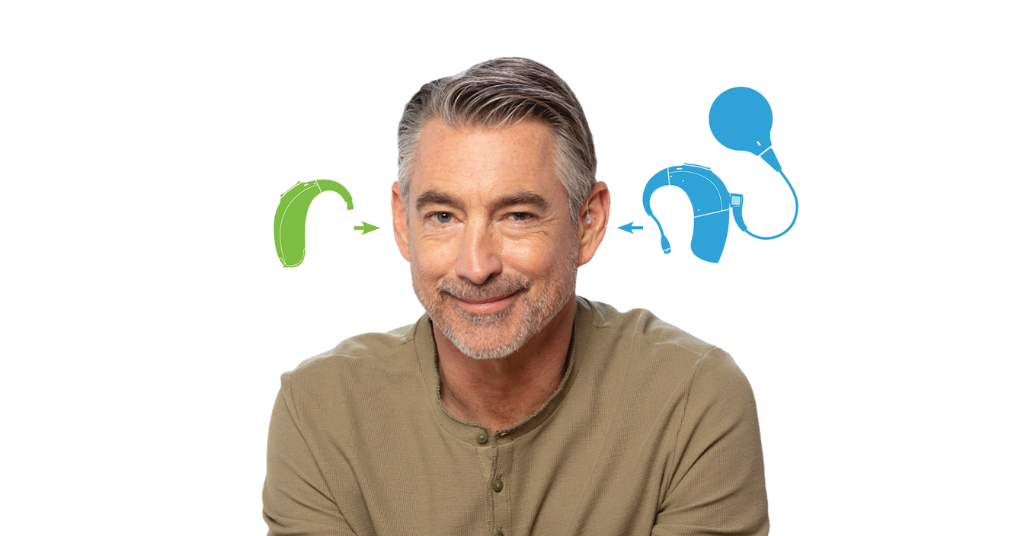
UK fights for BSL interpreters for COVID briefings
October 28, 2020
Why sign language should be an official language
November 2, 2020Accessible technology for people with hearing loss

In today’s fast moving world, technology is central in communication, productivity and success. But when it comes to technology and accessibility, it’s not always an even playing field.
While there is still room for improvement, many tech companies are providing advancements in accessible technology, ensuring their products can be used successfully by people with a wide range of abilities. In this article we break down popular technologies – including smartphones, video apps and media channels – to understand how these tools are accessible for people with hearing loss.
Accessible technology for people with hearing loss
Smartphones
Depending on which smartphone you own, you will have access to useful features for people with hearing loss.
Google Pixel Devices
In late August, Google launched Pixel 4a. The update included Live Captions, or real-time captioning, for video and audio calls.
This feature has since been rolled out on older Pixel phones.
Android Phones
Android phones now have Sound Notifications. This feature allows the phone to look for and alert you to important sounds. You can get notifications for the following sounds:
- Smoke and fire alarms
- Siren
- Shouting
- Baby sounds
- Doorbell ringing
- Knocking
- Dog barking
- Appliance beeping
- Water running
- Landline phone ringing
These are common sounds that often go unheeded by people with hearing loss. Users can get a vibration, push notification, or flash from the camera light. You can choose which sounds you want to be alerted to as well. This feature also works on Google’s Wear OS smartwatches, which vibrate when a noise is detected.
Another plus: It’s easy to turn Sound Notifications on and off whenever needed.
To get this feature, the Live Transcribe app has to be downloaded first. It’s only compatible with Android 5.0 and up. It’s automatically installed on Pixel phones. Go to this page for instructions and tips.
Apple
Apple’s iOS 14 was released in September, 2020. Among its features that are applicable to people with hearing loss as listed on Apple’s website:
- Sign language prominence: FaceTime can now detect when a participant is using sign language and make the person prominent in a Group FaceTime call.
- Video calling is now more natural by helping you establish eye contact even when you’re looking at the screen instead of the camera.
- Get notified and have your headphone volume reduced to help protect your hearing when you reach the World Health Organization’s recommended safe weekly listening dose.
- Headphone accommodations: amplifies soft sounds and adjusts certain frequencies tailored to your hearing to help music, movies, phone calls, and podcasts sound more crisp and clear.
- Sound Recognition: Notifies users of audible environmental alerts. Apple’s version can identify a few more sounds than Androids, like car horns and cats meowing.
Apple provides an overview of all of the iPhone hearing accessibility features.
Video Apps
Google Duo
Google’s video chat mobile app has a new feature. Users can now more easily figure out audio and voice messages even in a noisy environment. Live captions can also be found for messages sent on the app. If you go to Message Settings, there’s a toggle bar called “Captions for messages.”
*Note this doesn’t use the same technology as Live Captions. This will work on non-Pixel Android phones and those with iOS.
Zoom
While we wait for Zoom to add free live captions, the video conferencing platform has added features to assist virtual classrooms. They’re included with the free Zoom for Education plan. Teachers can now “pin” up to nine students on screen in their custom personal view. People who use sign language will still be visible even if they’re not triggered in speaker view. Students with hearing loss can pin both their teacher and interpreter on the screen at the same time.
Teachers can also place a spotlight on a group of students who are presenting to the class, which should make it easier for deaf and hard of hearing students to follow. Music (and other) teachers can take advantage of Advanced Audio and enhance “original sound,” to raise audio quality.
If everyone opts in, teachers can also selectively unmute student audio. This will make for a smoother experience all around.
Read more: deaf community petitions for free captions
Media
Netflix
Netflix has new variable playback speed settings on Android and iOS. Viewers can adjust the speed of what they’re watching to make it go slower or faster. Why does this flexibility matter to people with hearing loss?
As Netflix says in a blog post, “The National Association of the Deaf and the National Federation of the Blind have welcomed this feature. People who are deaf and have difficulty reading appreciate the option of slowing down the captioning, and people who are hard of hearing value the ability to listen at slower speeds…”
“People who are deaf and have difficulty reading appreciate the option of slowing down the captioning.”
More than 80 percent of members use subtitles or closed captions at least once a month, the Netflix post adds. Many of them report that they use dubs and subtitles to learn new languages.
Be forewarned: these settings have to be changed each time you watch.
Accessible technology is not only important for those of us with hearing loss. It’s important to provide an even playing field for a more unified world. We look forward to more advancements of accessible technology for people with hearing loss.



